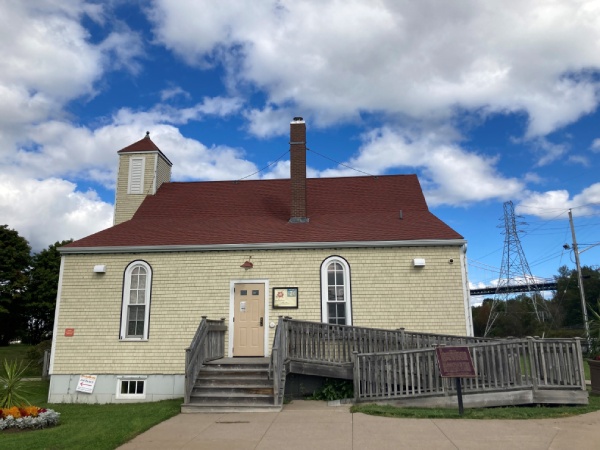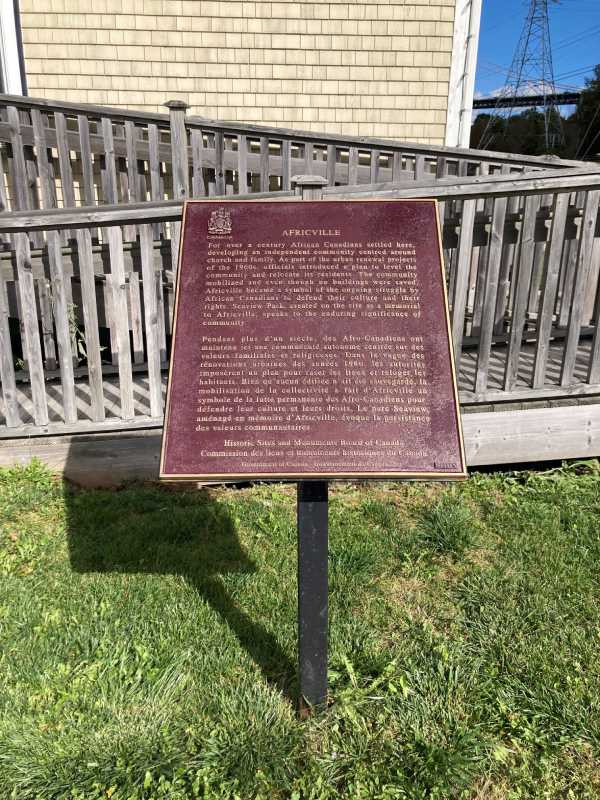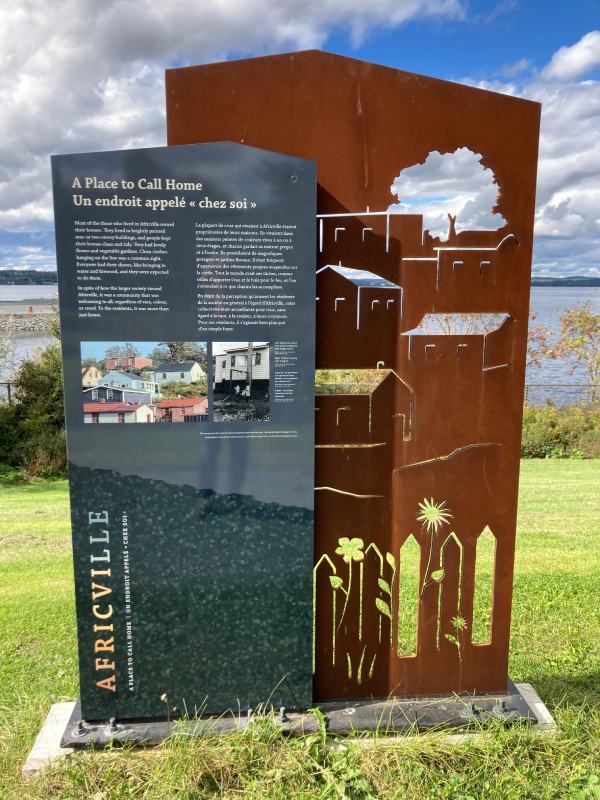Africville National Historic Site

© Parks Canada, Nathalie Ouellette, 2021
Africville was designated a national historic site in 1997.
Commemorative plaque: 5795 Africville Road, Halifax, Nova ScotiaFootnote 1
Africville
For over a century African Canadians settled here, developing an independent community centred around church and family. As part of the urban renewal projects of the 1960s, officials introduced a plan to level the community and relocate its residents. The community mobilized and even though no buildings were saved, Africville became a symbol of the ongoing struggle by African Canadians to defend their culture and their rights. Seaview Park, created on the site as a memorial to Africville, speaks to the enduring significance of community.
Description of historic place
Africville National Historic Site of Canada is a site of remembrance for Halifax’s African Canadian community. Once the location of a historic Black community, the houses were demolished in the 1960s and the land converted into municipally owned Seaview Park. Located at the north end of Barrington Street on Bedford Basin, below the A. Murray MacKay Bridge, Africville is a symbol of African Canadian community organization and a site of pilgrimage for people honouring the struggle against racism. The open landscape is marked by a sundial-shaped monument commemorating the former community. The designation refers to the landscape and its associated resources, including a few foundation remnants.
Heritage value
Africville was designated a national historic site of Canada because: prior to its relocation in the 1960s, this community was representative of Black settlement in Nova Scotia in its social organization and in its geographical and metaphorical position on the periphery of white society; with the emergence of a more politically conscious and confrontational spirit in Black culture, the clearance of Africville in the name of urban renewal became an enduring symbol to Black Canadians of the need for vigilance in defense of their institutions.

© Parks Canada, Nathalie Ouellette, 2021

© Parks Canada, Nathalie Ouellette, 2021
Africville was initially settled by African Canadians seeking employment in Halifax during in the 1830s and 1840s. The community grew during the 19th century with its own school and church, the Seaview African United Baptist Church. Over the years, the City of Halifax consistently denied the community municipal services and, during the urban renewal movement of the 1960s, undertook the clearance of the area. Despite protests, the community was dismantled and its members were relocated elsewhere in the city. A campaign for redress eventually emerged and Africville took on a symbolic identity, one which has persisted as representative of the need for pride and vigilant defense of Black institutions and traditions. As such it has served as a source of inspiration to other African Canadian communities and nurtured leaders of its own, including members of the Carvery family and the well-known defender of human rights, Burnley ''Rocky'' Jones. The city has developed the land into the Seaview municipal park (now named Africville Park) which has become an annual place of pilgrimage for the Africville Genealogical Society, an organization of former residents and their descendents.
Source: Historic Sites and Monuments Board of Canada, Minutes, June 1996.
The National Program of Historical Commemoration relies on the participation of Canadians in the identification of places, events and persons of national historic significance. Any member of the public can nominate a topic for consideration by the Historic Sites and Monuments Board of Canada.
Related links
- National historic designations
- National historic persons
- National historic sites designations
- National historic events
- Submit a nomination
- The Canadian Encyclopedia: Africville
- Canadian Museum for Human Rights: The story of Africville
- Nova Scotia Archives: Gone but Never Forgotten - Bob Brooks' Photographic Portrait of Africville in the 1960s
- Date modified :